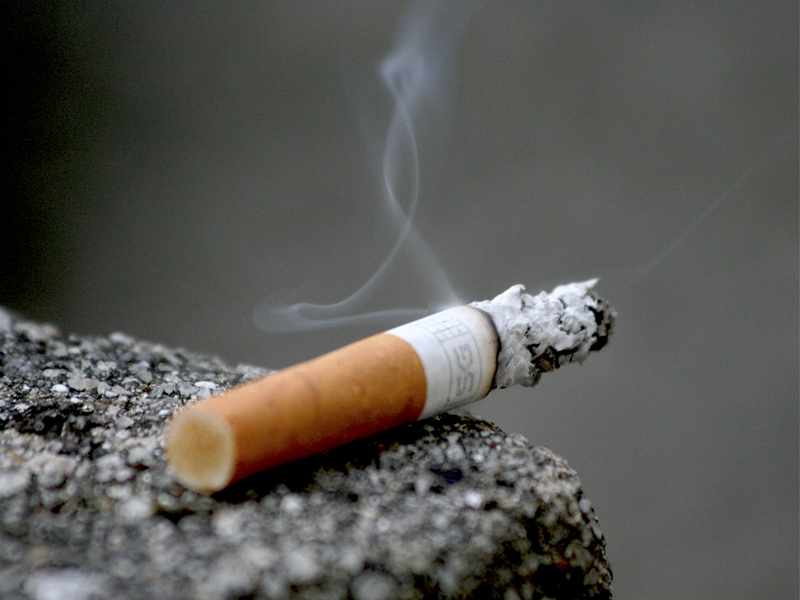
A first-of-its-kind study by UCR professor of cell biology Manuela Martins-Green indicates that exposure to thirdhand smoke may be harmful to humans. Previous studies have examined the effects of first- and secondhand smoke (FHS and SHS respectively), but the research by Martins-Green is the first to examine the effects of thirdhand smoke on animals.
Whereas firsthand smoke is the inhalation of chemicals when a smoker takes a drag of a cigarette and secondhand smoke is exposure to smoke emanating from a cigarette, thirdhand smoke is the accumulation of particles and chemicals from tobacco smoke that collect over time on clothes, furniture and other objects. People can be exposed to the chemicals by touching, inhaling, or ingesting things laden with thirdhand smoke. Previous research has found that thirdhand smoke lingers on surfaces for at least two months, even after those surfaces are cleaned. Often, nonsmoking residents are exposed to the thirdhand smoke left behind in houses when smokers move out.
“It is now well known that SHS is intrinsically more toxic than directly inhaled firsthand smoke,” Martins-Green writes in the introduction. “Recently, a new and persistent potential threat has been discovered — thirdhand smoke (THS) — the accumulation of SHS on environmental surfaces that ages with time, becoming progressively more toxic.”
To conduct the experiment, 3-week-old mice were deposited in ventilated mouse cages that contained objects exposed to secondhand smoke, with the goal of simulating residential conditions for young children who live in smoking households. After six months, the mice were examined for chemical exposure and health impacts.
“We show that significant damage occurs in liver, lung and during healing of wounds,” Martins-Green writes. “In addition, the mice display hyperactivity.” The observed health impacts of thirdhand smoke are consistent with the effects of secondhand smoke that have been noted in previous studies. Among the long-term health problems that are connected with exposure to thirdhand smoke are cirrhosis of the liver, asthma, cardiovascular disease and pulmonary disease.
Moreover, “with prolonged exposure, (children) may be at significant risk for developing more severe neurological disorders,” the study reports. “These results provide a basis for studies on the toxic effects of THS in humans and inform potential regulatory policies to prevent involuntary exposure to THS.”
The study was published just over a month after the University of California implemented a systemwide ban on tobacco, including unregulated nicotine, chewing tobacco and electronic cigarettes. UC Irvine briefly allowed the use of chewing tobacco and electronic cigarettes outside of buildings, but revised its regulations after UC President Janet Napolitano “clarified” the original policy. The ban took effect Jan. 1; prior to that, UCR had 10 designated smoking locations on campus. Approximately 12 percent of UCR faculty, staff and students identify as tobacco users.
The project was a large-scale collaborative study, with participants from UCR, UC San Francisco, San Diego State University, Lawrence Berkeley National Laboratory and Harvard Medical School. The money for the research originated from a grant from the Tobacco-Related Disease Research Program.








